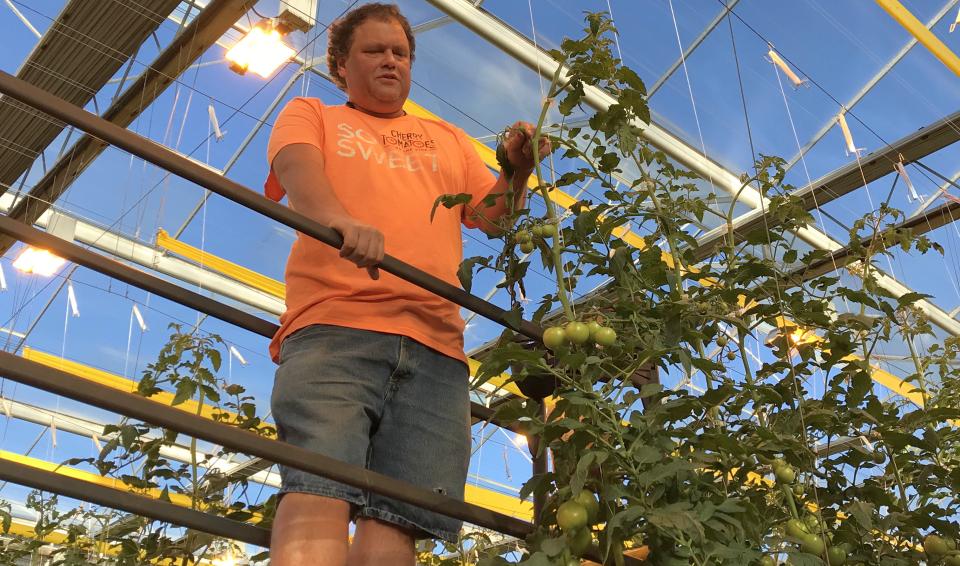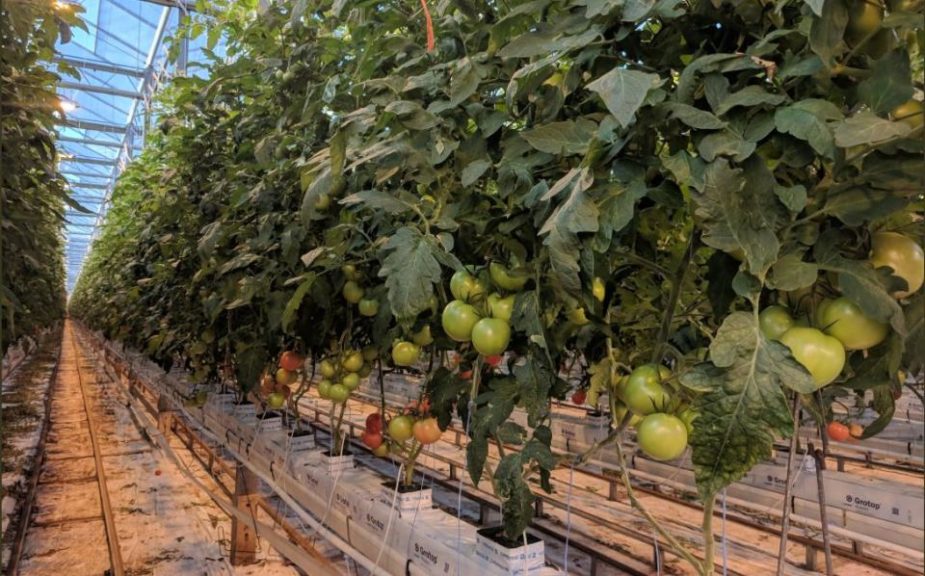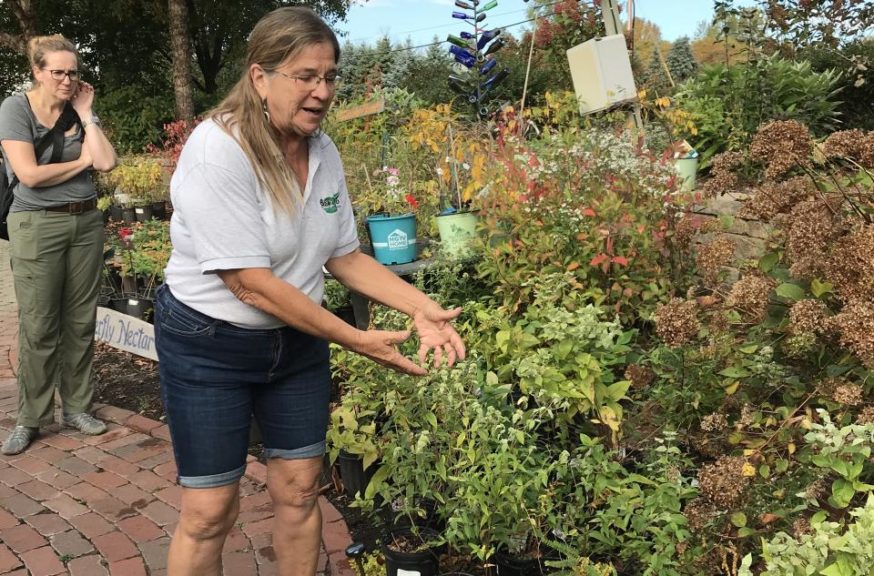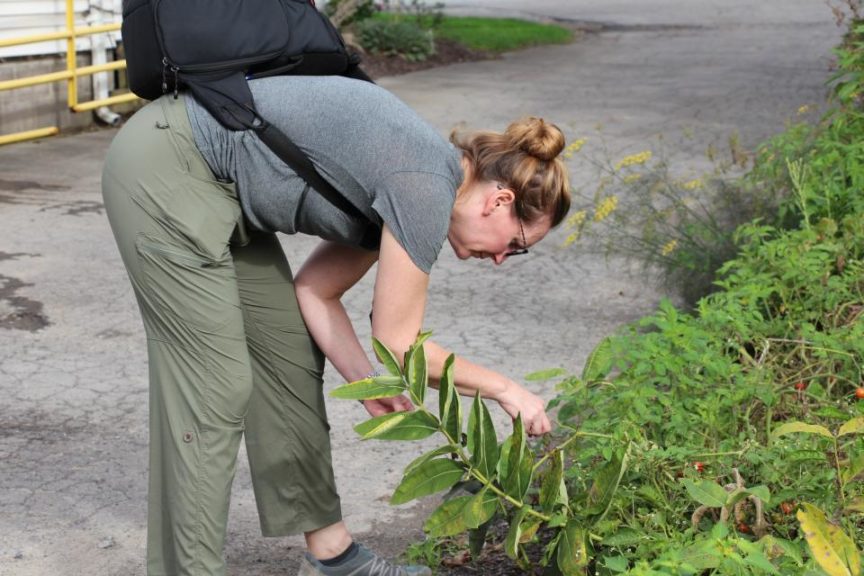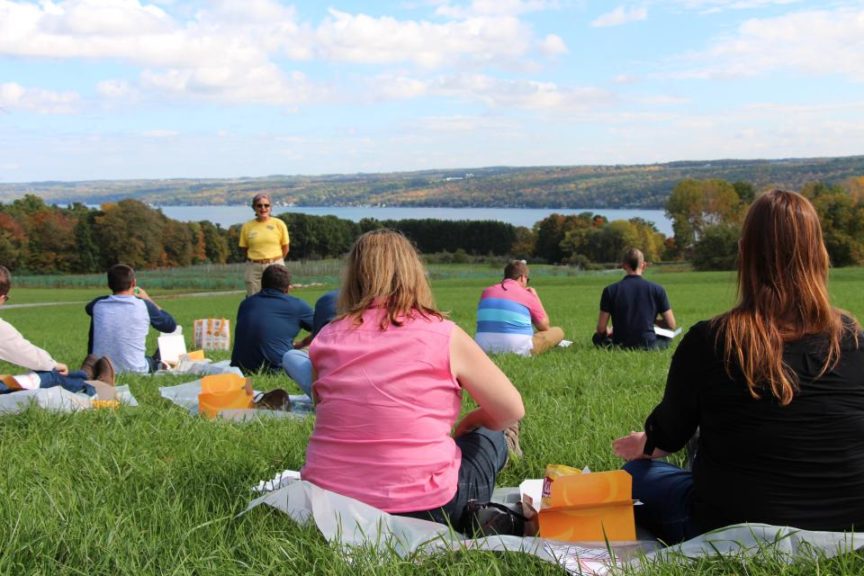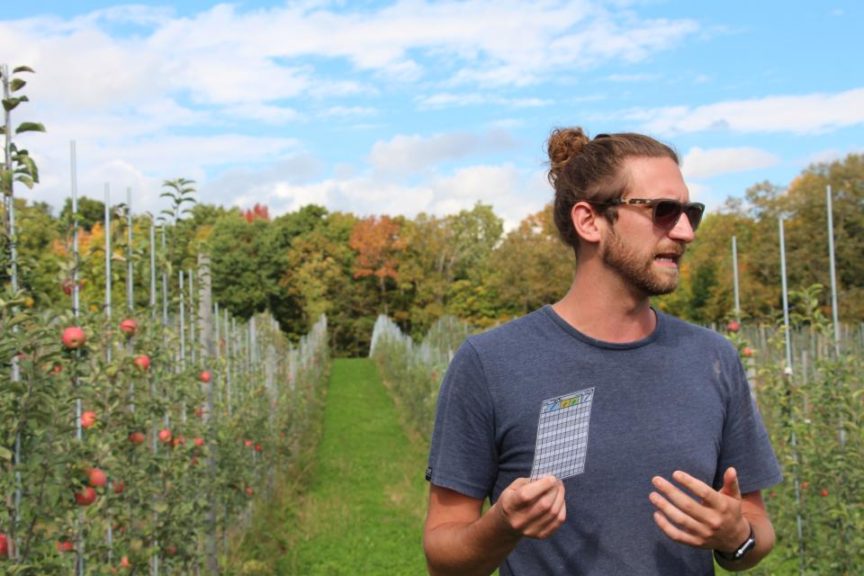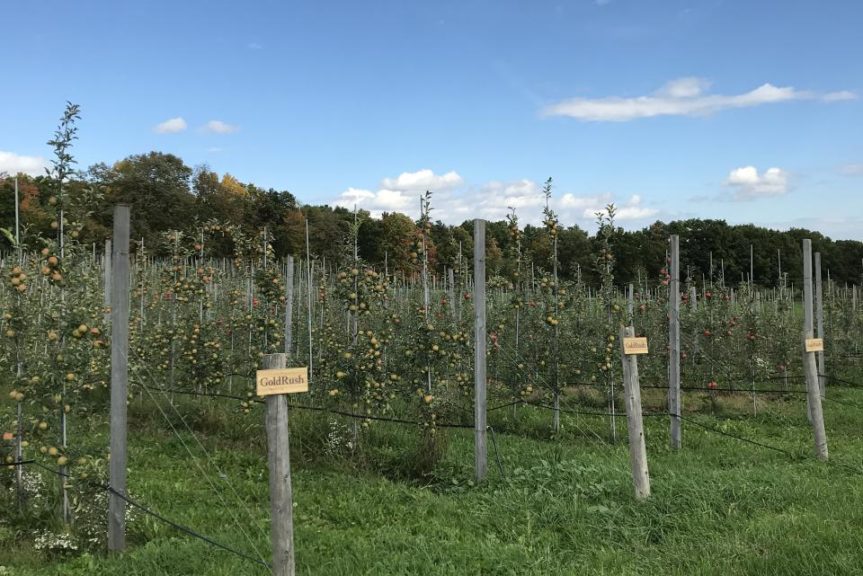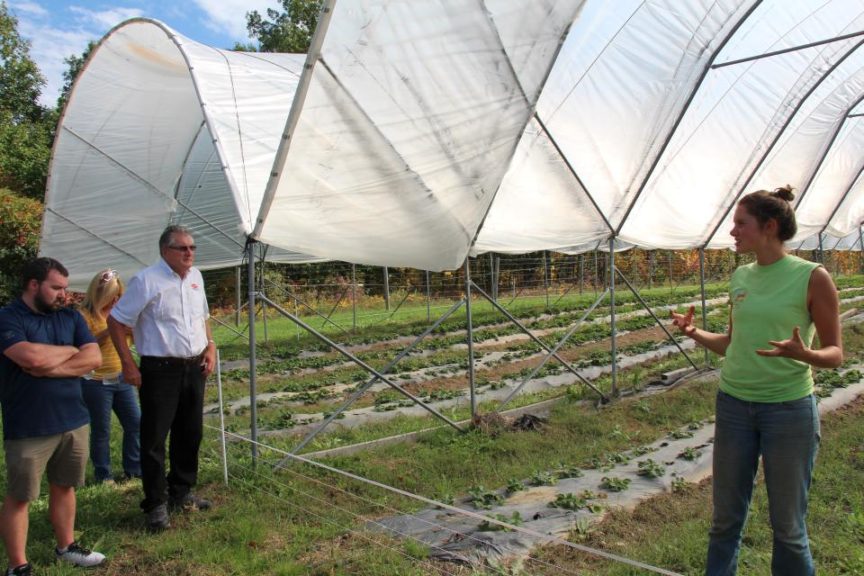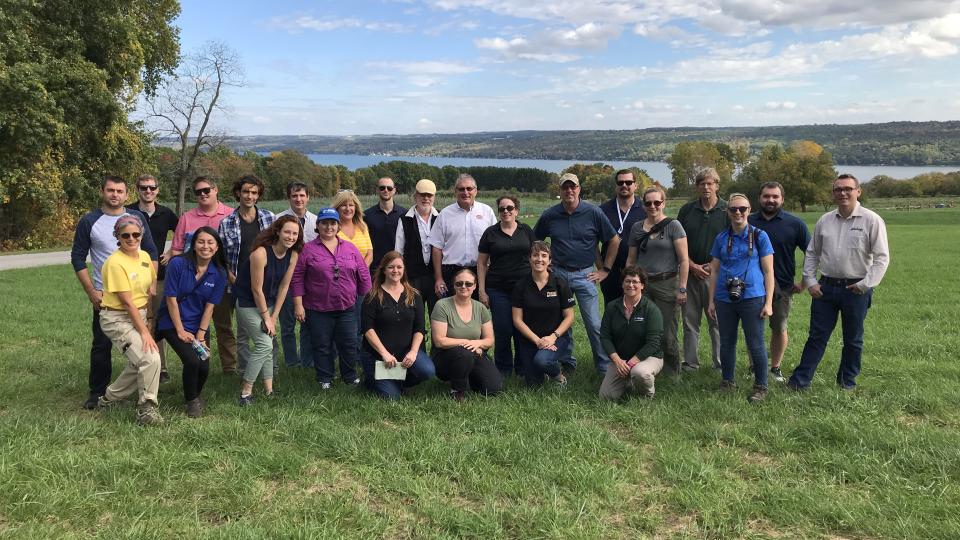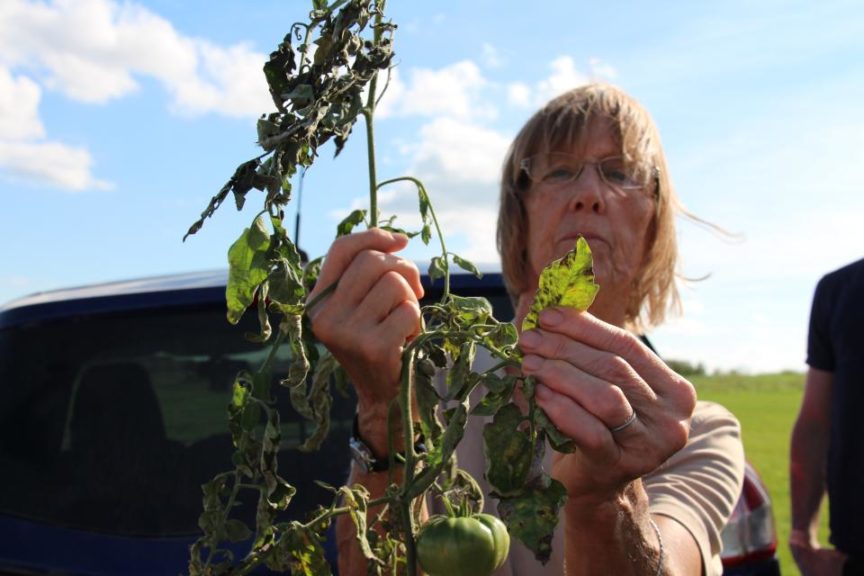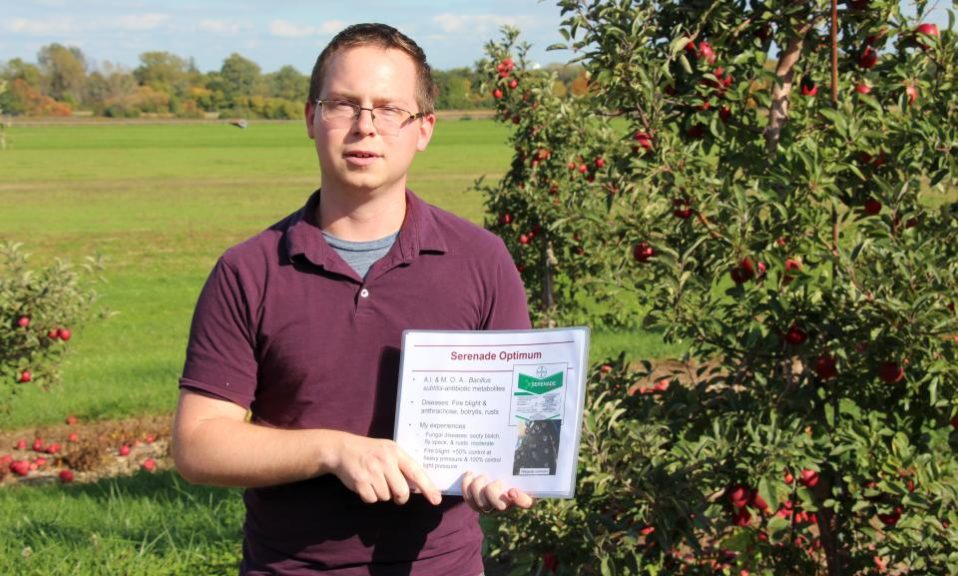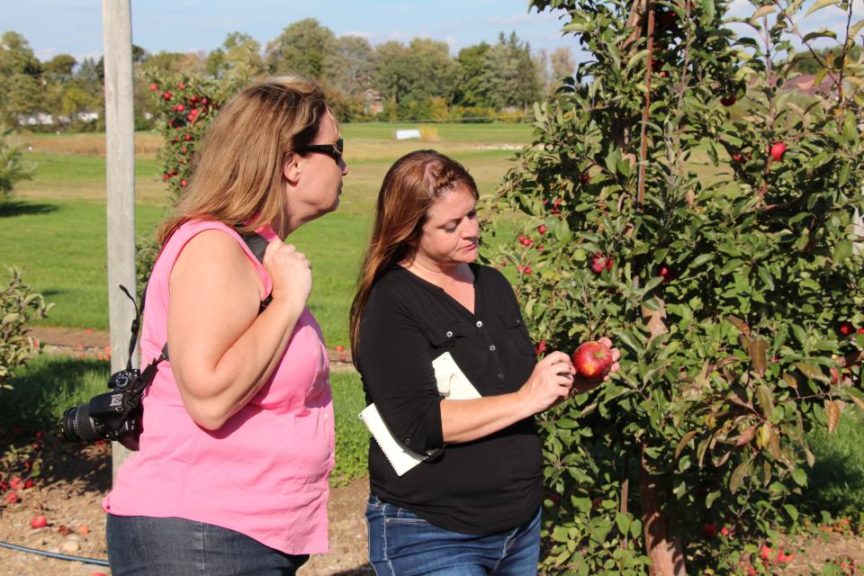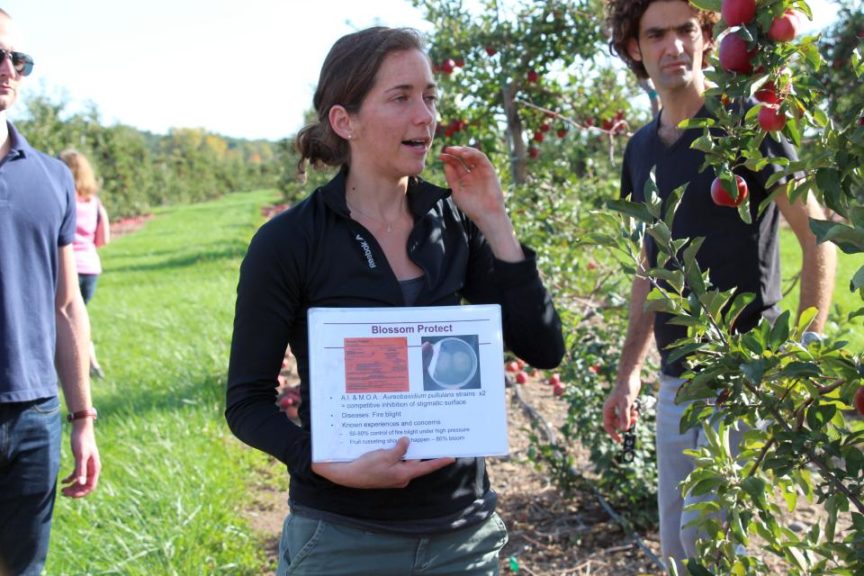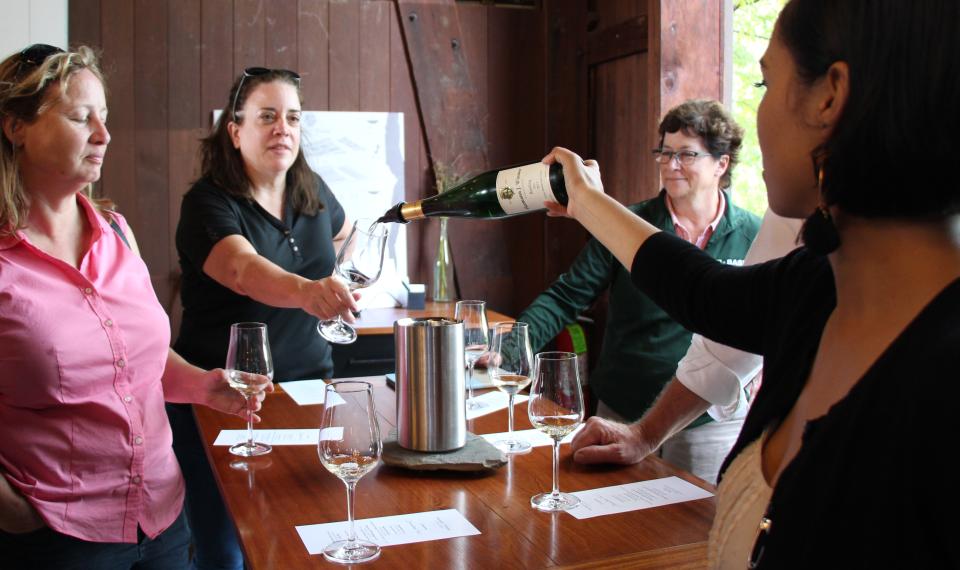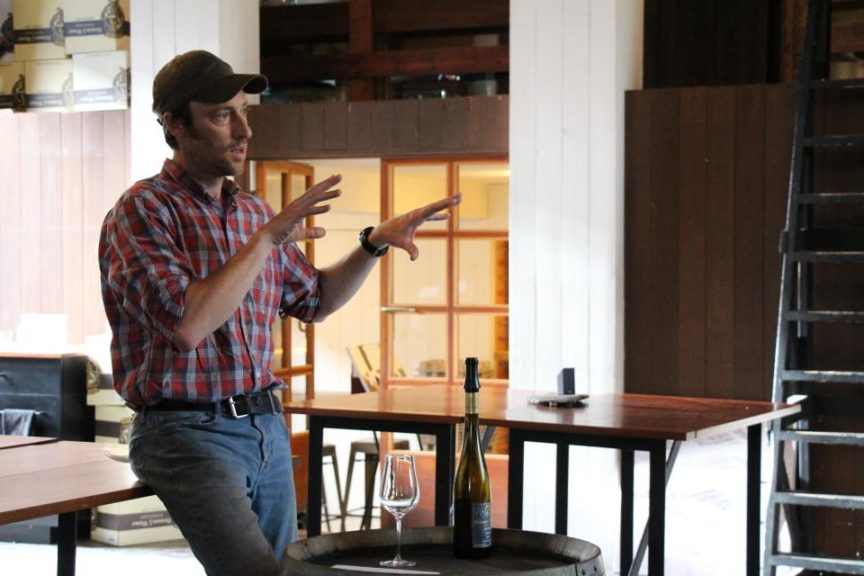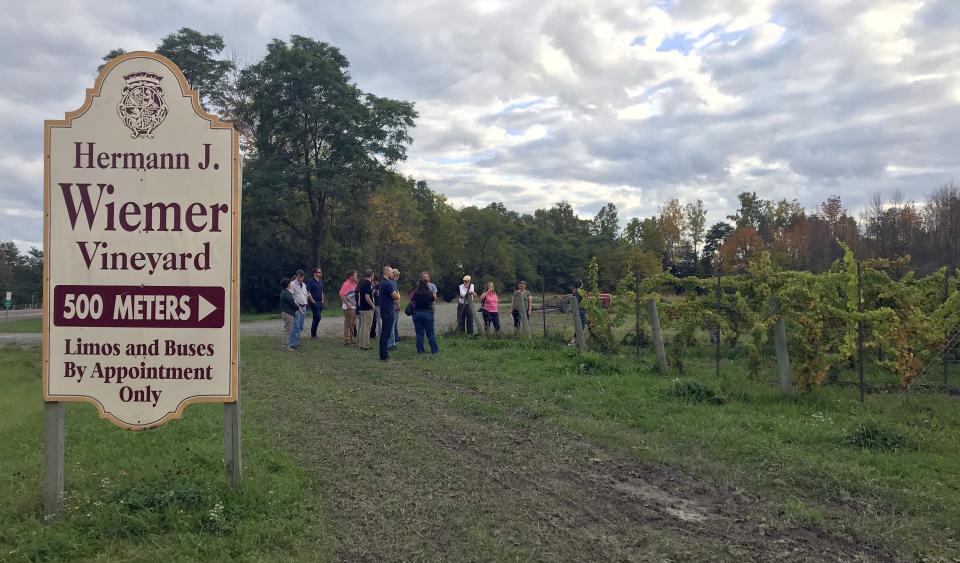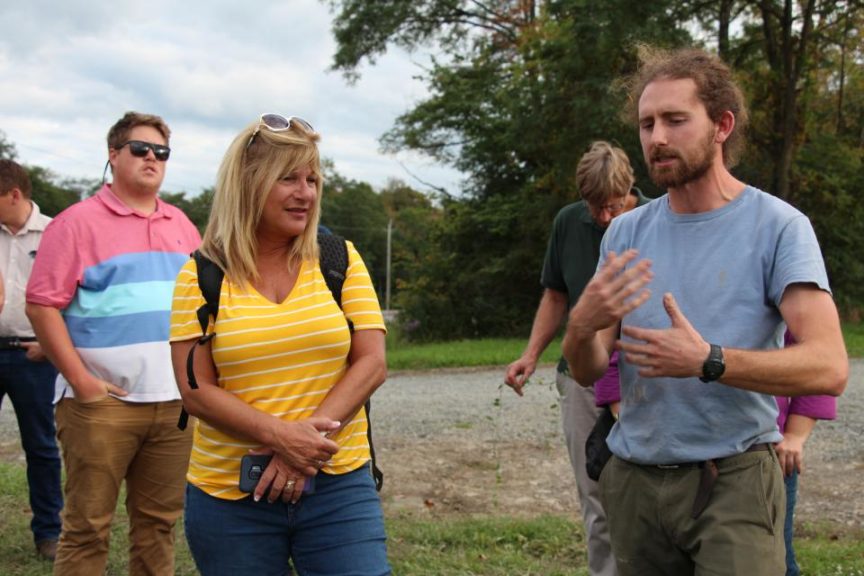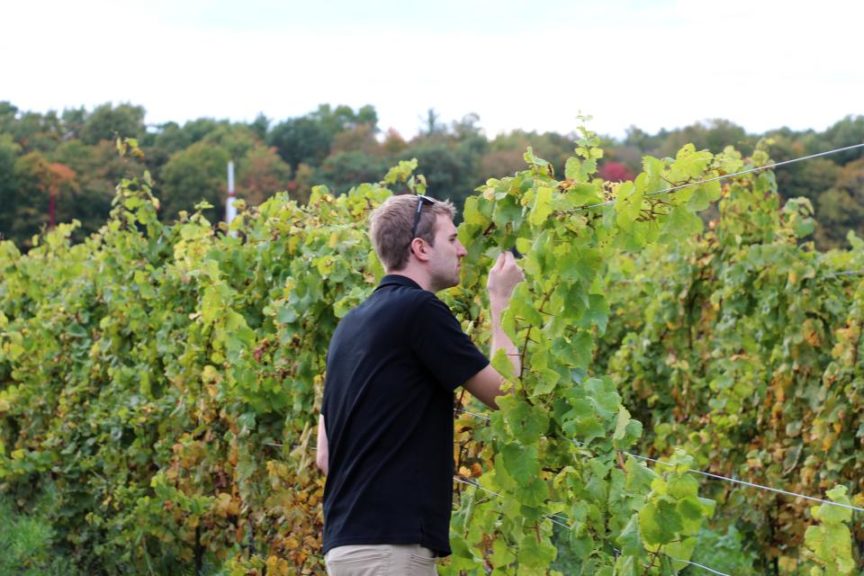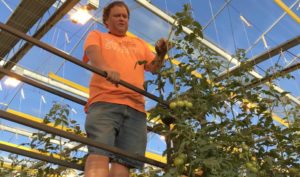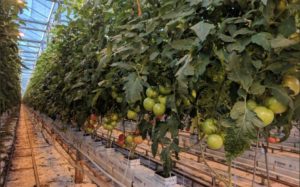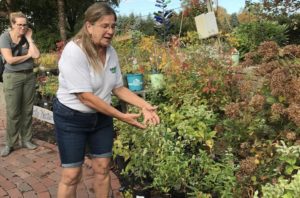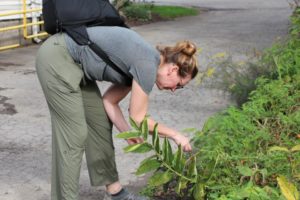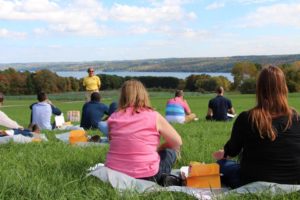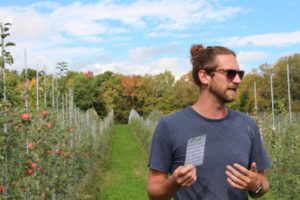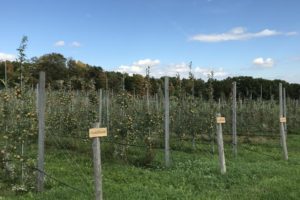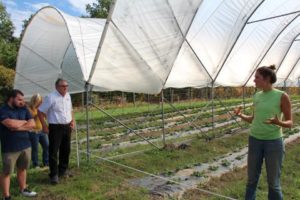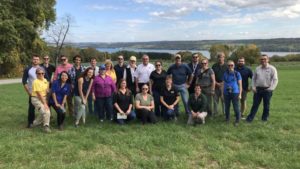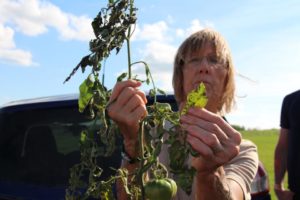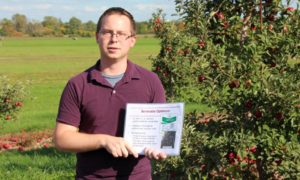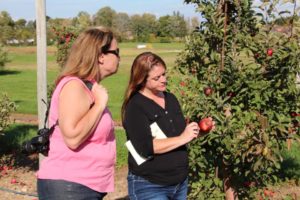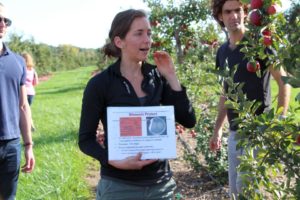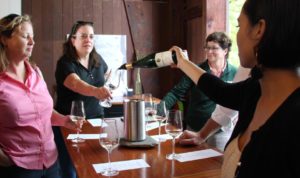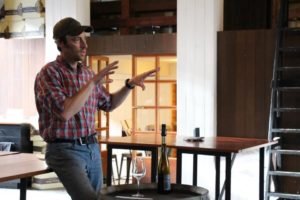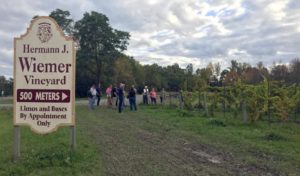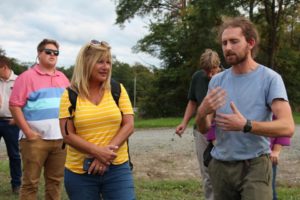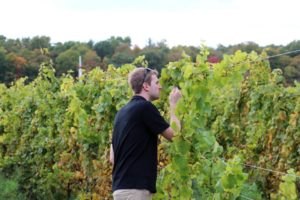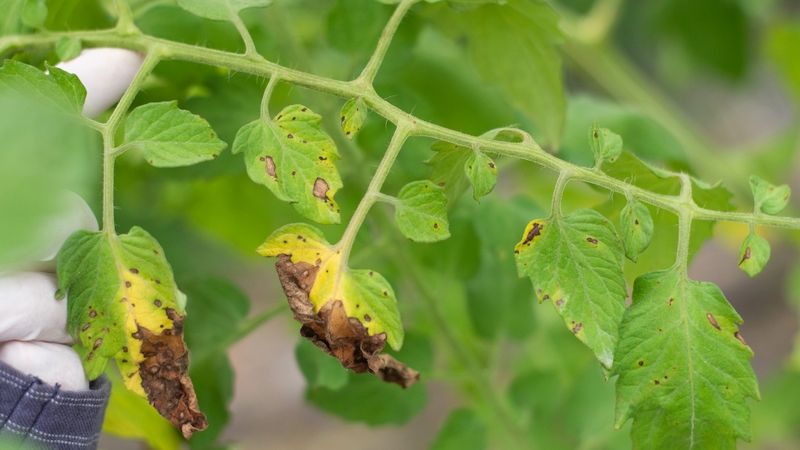Biocontrols and Organic Produce a Powerful Pair on Tour
It’s common knowledge, or at least roughly accepted in the Eastern part of the U.S. that growing organic tree fruit (and vegetables, too) is challenging. It’s also understood these challenges may be perceived to be so insurmountable that growers are reluctant to risk a year’s income to even try to produce crops organically.
But what makes organic production, especially in New York, intriguing is how Wegmans Food Markets uses their own farm as part research — part education, which is then passed on to grower-partners throughout the region.
“A certain amount of challenge we take on,” Mark Bowker a “crop owner” on Wegmans Organic Farms and Orchard in Canandaigua, NY, says. Wegmans Organic Farms and Orchard was a stop on the Biocontrols USA East 2018 pre-conference tour.
As a “crop owner,” Bowker is responsible for overseeing organic production of the farm’s 4 acres of high-density apples, 7 acres of table grapes, and 2 acres of semi-dwarf apples, as well as various stone fruits and blueberries.
Bowker conducts research with the assistance of Cornell University – including Plant Pathology researchers to help develop best practices for disease and pest control, by “trying to tackle the problem with a different toolbox.”
“We can eliminate the unknown by taking away some of the risk,” Bowker says of the farm’s organic trials. The farm invites grower-partners to visit and see how they’re integrating organic and biocontrol into their production, while maintaining good quality production and yields.
Growing organic tree fruit begins with selecting varieties that are disease-resistant, Bowker says. But, the challenge is many of the varieties that can be grown successfully are either unknown to consumers or lack the flavor pop that drives produce purchasing.
“Resistance is a cool thing, but customers don’t care about resistance, they care about flavor,” he says.
And, as strawberry crop owner Kaitlin Voellinger told the Biocontrols East tour-goers, at Wegmans, “flavor is our No. 1 focus. We want to give our consumers a unique eating experience.”
Voellinger discussed the farm’s ‘Charlotte’ strawberry production, an everbearing variety that fruits in the spring and fall. With the threat of spotted wing drosophila, summer production is avoided, and other cultural practices are utilized, such as exclusion netting.
‘Charlotte’ was selected due to its aromatic flavors.
Strawberries on Wegmans Organic Farms and Orchard are produced biodynamically. Voellinger explains this means the berry patch is viewed as an ecosystem and everything is done with a purpose, and the source of all items and materials used is scrutinized.
Biodynamic Vineyard
Biodynamic production also was a topic at Herman J. Wiemer Vineyards in Dundee, NY, where Dillon Buckley, Winemaker, and Fred Merwarth, Co-Owner, gave tourgoers a chance to taste the differences between their organic, sustainable, and biodynamic vineyards and how that influences their vineyards’ wines.
This growing season has been a peculiar one for the area. Through mid-July, the area was in a drought, but that changed in a hurry. After that, rains continued and made keeping fruit clean somewhat of a challenge.
“For us to be done with ‘Riesling’ by Oct. 9 is extremely rare,” Buckley says.
The black rot infected their organic and sustainable vineyards quite hard, but, in the biodynamic vineyards about 1% or 2% of the fruit was infected.
“The biodynamic field had much cleaner fruit than our organic block,” Merwarth says. “It’s unsustainable to go organic without black rot control.”
Biodynamic production was considered originally “to get potentially more consistent fermentation from vintage to vintage,” Merwarth says. All wines are produced using natural fermentation and biodynamic practices in the winemaking process.
Fruit also is harvested on a calendar basis, so it is picked when “the vine is giving its maximum energy to the fruit,” Buckley says.
Cornell Agritech
While at a stop at Cornell Agritech in Geneva, NY, (formerly known as the New York State Agricultural Experiment Station, tourgoers got a chance to learn about the latest research in biocontrol use in vegetable crops from Holly Lange, Plant Pathology Technician and Plant Pathology graduate students Anna Wallis and David Strickland, who spoke about summer disease and fire blight biocontrols research their lab — headed by Kerik Cox, Associate Professor in Plant Pathology— is doing.
The shift from antibiotic use to alternatives for fire blight control is a natural progression. Wallis notes there have been some antibiotic resistant fire blight infections within Western New York, the last namely in 2012. So integrating biocontrols into a fire blight prevention program can be beneficial.
Lange mentioned that while some cucumber varieties may boast resistance to downy mildew, infections can still flare up.
Like this year, she says, where “it was a different strain that blew in.”
Greenhouse Production
The day’s tour began at Intergrow Greenhouses in Albion, NY, which specializes in year-round tomato production – cherry, tomatoes on vine and beefsteak. Some years, whiteflies are under control, others it’s a challenge.
“There are moments when we feel like we’re struggling,” co-owner Mario Lemme says of using biocontrols in the greenhouse. “It feels like a roller coaster.”
The move to biocontrols was in part because fewer conventional registrations are available, but also as a way to set his production apart from competition. He uses Serenade (Bayer) and Double Nickel (Certis) fungicides for disease control and beneficial insects to help maintain pest control.
“We’re spraying a lot more, but it’s a lot more of biopesticides,” he says.
Once a year, trimmings and plant material from thinning are cleaned off the greenhouse floor (which is covered in tarps). The thought is that while eggs of pests may be hatching on the tomato plants, beneficials could have layed eggs on plant material that was just removed and keeping those clippings in the greenhouse would allow for them to hatch begin their predation process.
Discussions on using bumble bees in the greenhouse was conducted by BioBee and beneficials was led by Bioline.
Lemme says, as a child, he would have to hand-pollinate all the flowers in his family’s greenhouse. Now, bumble bees help effectively pollinate and ensure consistent fruit size.
“Biocontrol systems are as strong as the weakest link,” Ronald Valentin, Technical Specialist for Bioline, says.
Be sure to follow along with the Biocontrols East conference on Twitter at @biocontrolsconf and the hashtag #BiocontrolsEast.





